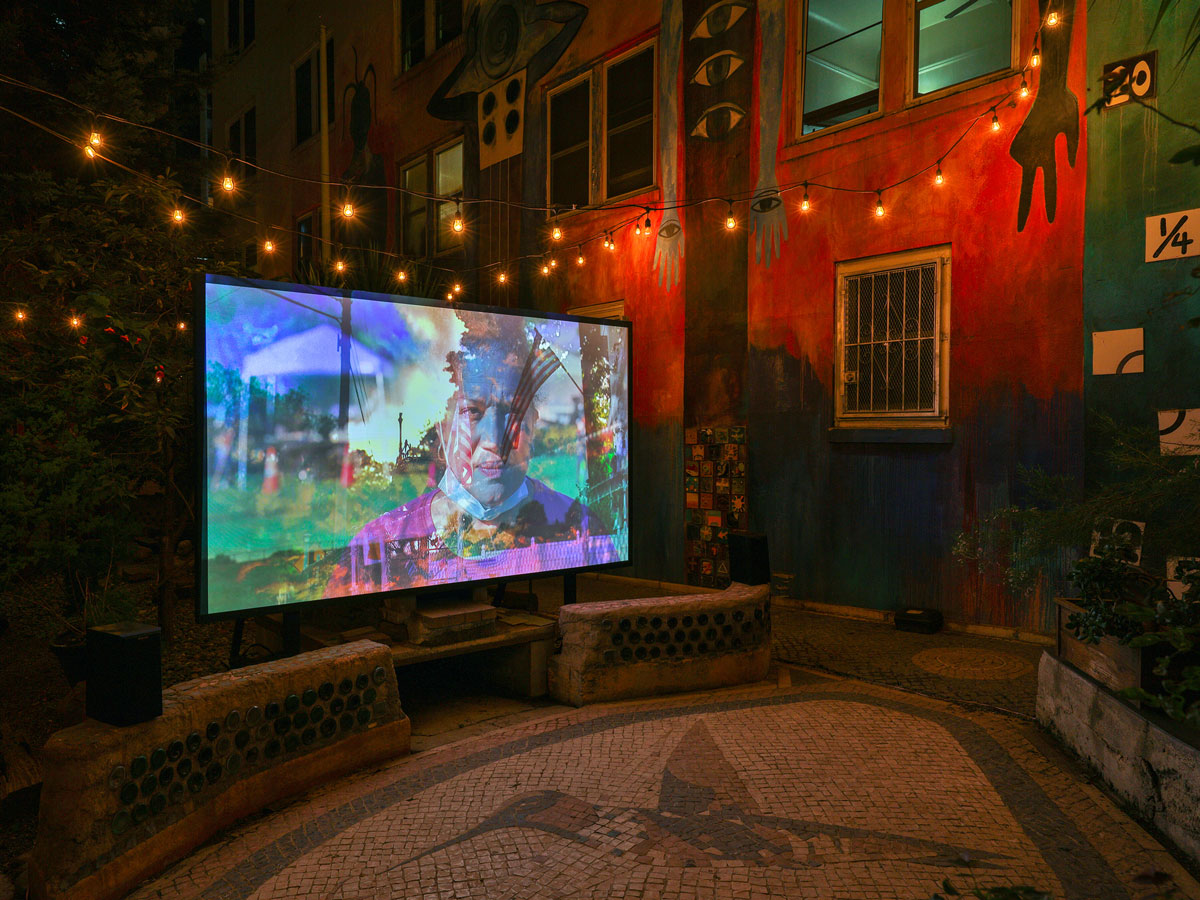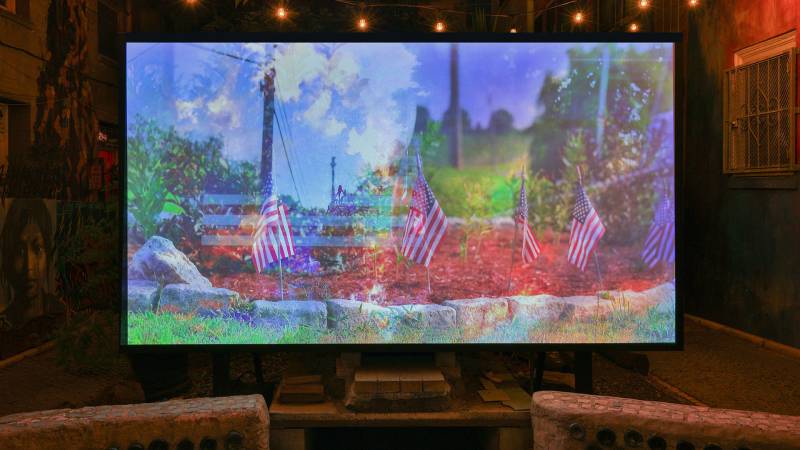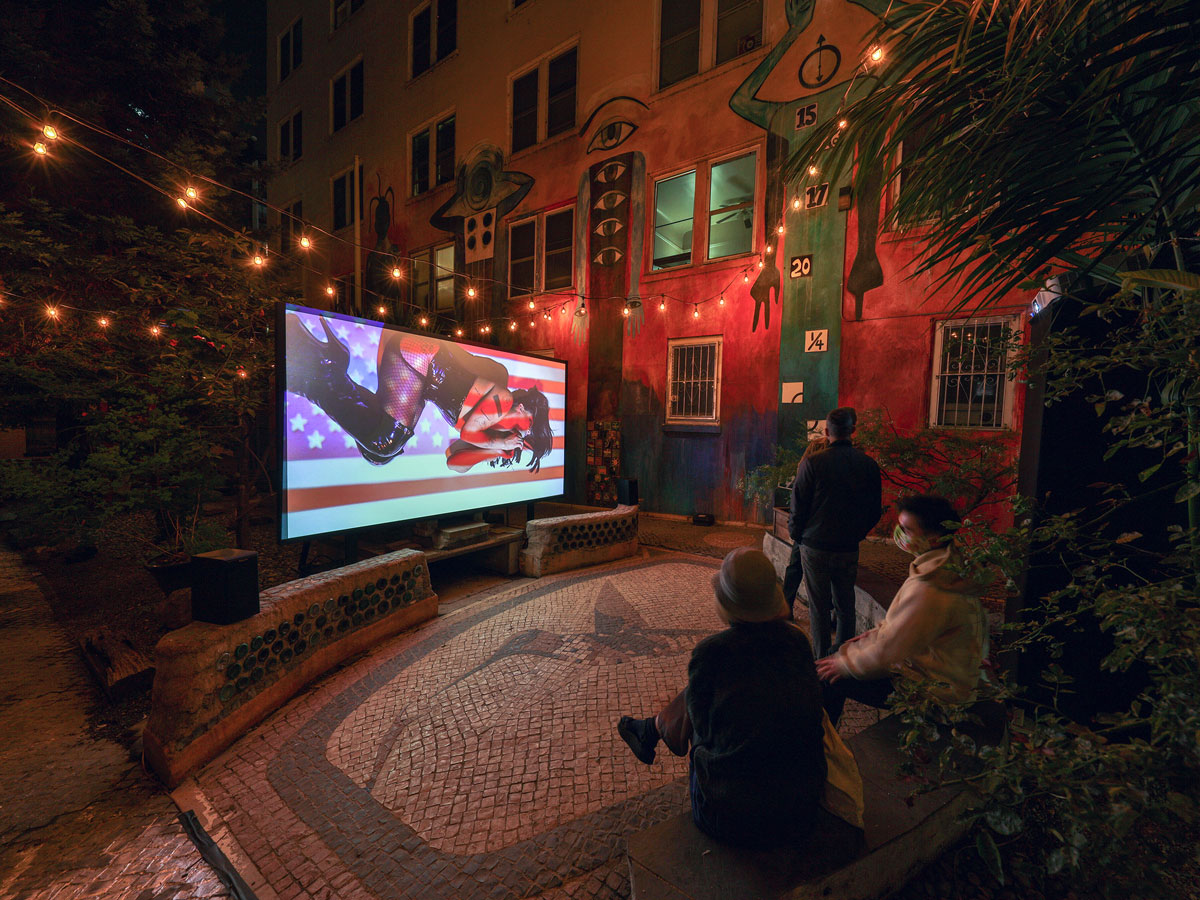When I try to think past Nov. 3, my brain splits into possible futures like the chapters of a Choose Your Own Adventure paperback. Will the election go this way (turn to page 45) or this way (turn to page 46)? So much seems to hang in the balance and so much seems up in the air: affordable housing, voting rights, workers’ rights, bodily autonomy, the very definition of American values.
But the thing is, all possible outcomes, to continue this potentially misguided metaphor, are part of the same book. (It could be called Misadventures in Late Capitalism.) And as much as we progress through its pages, there’s always the potential of being forced back to another branch in the timeline, a present that more closely resembles a previous moment in this country’s fraught and unequal history.
Jeffrey Gibson’s Nothing is Eternal, an 18-minute video commissioned by the CCA Wattis Institute for Contemporary Art, distills these forking paths into a non-narrative, tripped-out, vaguely menacing yet routinely beautiful thing. First shown at the Tenderloin National Forest (an alleyway-turned-oasis off Ellis Street) on Oct. 22 with screenings online and at the Headlands scheduled for Oct. 30–Dec. 12, Nothing is Eternal meets the moment—not by being perfect, but by emphasizing the uncertainty present in all aspects of life, including our particular political arena.

The video, curated by Kim Nguyen and organized by Diego Villalobos, begins with a light drumroll, atonal strings and a view through forest leaves that cross-dissolves into a waving American flag. (Were it not for the context of its conception and presentation, its first three-and-a-half minutes might be confused for right-wing political B-roll.) But at that 3:30-minute mark, the music shifts, the strings morph into synths, and close-ups of people’s faces enter the frame. Images flicker; the cross-dissolves crowd up until three or four different scenes overlay each other. Face masks pinpoint the making of the video in the current pandemic, while other elements are timeless: a nighttime drive, a spider web, countless homes sporting miniature lawn flags or full-sized Stars and Stripes.
I can identify two recurring “characters” in Nothing is Eternal. One is a grounded, possibly injured black-feathered bird, the opposite of the soaring eagle we might expect to accompany flag images. The other is Celeste, a drag performer who appears only halfway through, along with the video’s title, which flashes like a neon sign. Celeste dances before time-lapse clouds, lip synching words to a song we cannot hear. The performer’s expressive, beautifully made-up face conveys anguish, drama and the seductive power of pop. It’s a bit of performance art, compelling even without context, bookended by what are essentially documentary-style images—despite their experimental trappings.




